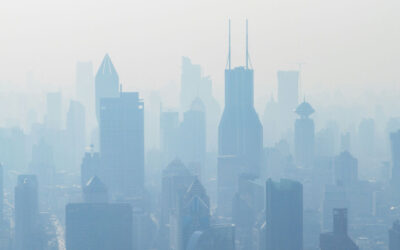In an era marked by the ominous shadow of climate change, the intersection of environmental shifts and human health has never been more critical. The World Health Organization heralds climate change as the paramount threat to health in the 21st century, highlighting its pervasive impact on physical, mental, and socio-economic well-being. As we delve into the intricate nexus of climate change and health, it becomes imperative to examine how vulnerable populations bear the brunt of its adverse effects and how innovative solutions like moringa can pave the path towards resilience and security.
Direct Health Effects
The escalating frequency and intensity of extreme weather events serve as stark reminders of climate change’s direct assault on human health. Heatwaves, floods, and wildfires, amplified by rising temperatures, pose existential threats to vulnerable demographics such as children, pregnant women, and the elderly. These events precipitate heat stress, dehydration, injuries, and displacement, exacerbating mental health challenges and precipitating societal upheaval.
Indirect Health Effects
Beyond the immediate onslaught of extreme weather events, climate change engenders a cascade of indirect health ramifications. Deteriorating air quality, propelled by escalating air pollution and wildfire smoke, precipitates respiratory ailments and cardiovascular diseases. Alterations in temperature and precipitation patterns facilitate the spread of infectious diseases, extending their reach and ensnaring unsuspecting communities in their grip. Additionally, disruptions in agricultural production and compromised food and water security usher in the spectre of malnutrition and waterborne illnesses, further imperiling vulnerable populations.
Socio-Economic Impact
The reverberations of climate change reverberate far beyond the realm of health, permeating into the economic and social fabric of societies. Adverse economic repercussions, including heightened unemployment and financial strain, afflict certain segments of the populace, compounding pre-existing disparities and amplifying social inequities. Vulnerable communities, particularly those residing in rural hinterlands and marginalized urban enclaves, contend with constrained access to healthcare and essential services, magnifying their susceptibility to climate-induced health crises.
Identifying Vulnerable Populations
A meticulous understanding of vulnerable populations is indispensable in crafting targeted interventions and fortifying resilience against climate-related health hazards. Children, pregnant women, older adults, individuals with pre-existing medical conditions, and marginalized communities emerge as frontline protagonists in the battle against climate-induced health disparities.
Conclusion
As we stand at the precipice of a climatic precipice, the imperative for action looms large on the horizon. moringa, an innovative platform in climate-resilient health insurance, emerges as a beacon of hope in safeguarding vulnerable populations against the ravages of climate change. By aligning proactive risk management strategies with the imperatives of health equity, moringa empowers insurers to chart a course towards resilience, adaptation, and collective well-being. As we forge ahead on this transformative journey, let us rally behind the clarion call for action, bridging the chasm between climate change and health equity, and ushering in a brighter, more sustainable future for all.
This blog underscores the profound impact of climate change on human health, elucidating the vulnerabilities of marginalized populations and championing innovative solutions like moringa in fortifying resilience and promoting health equity in the face of environmental adversity.
Reference: Better Health Victoria – Climate Change and Health
Image Credits: Karolina Grabowska on Pexels






